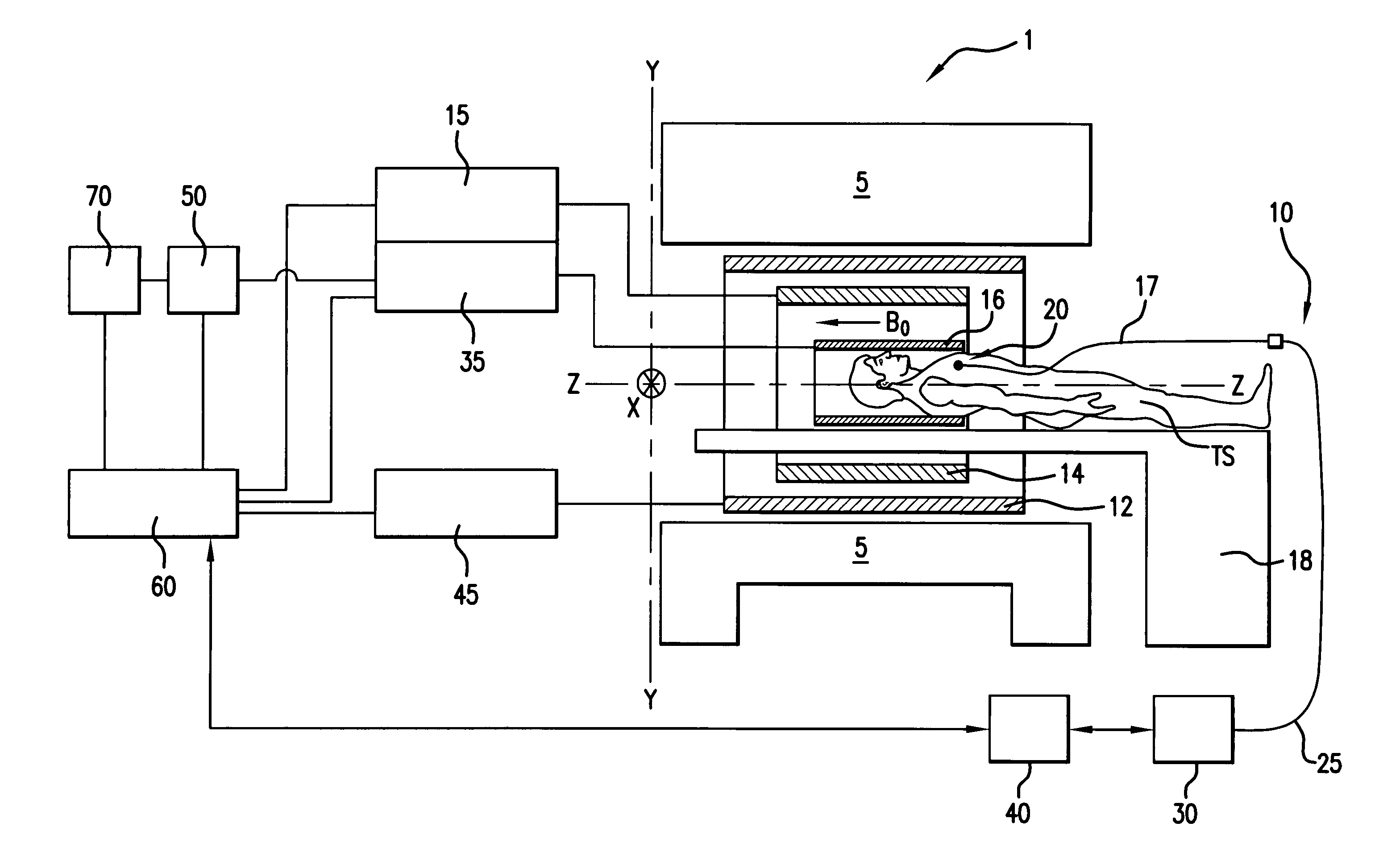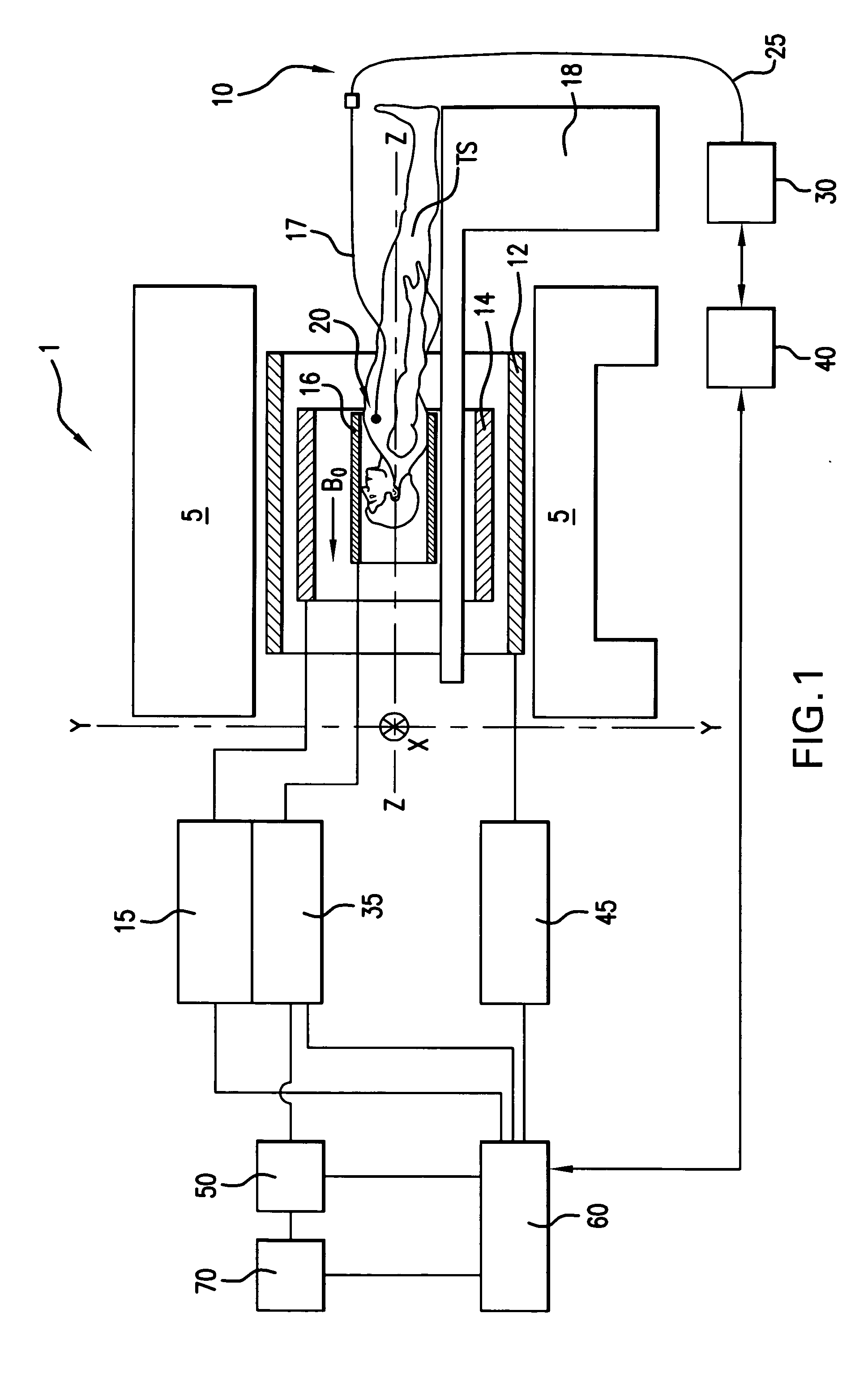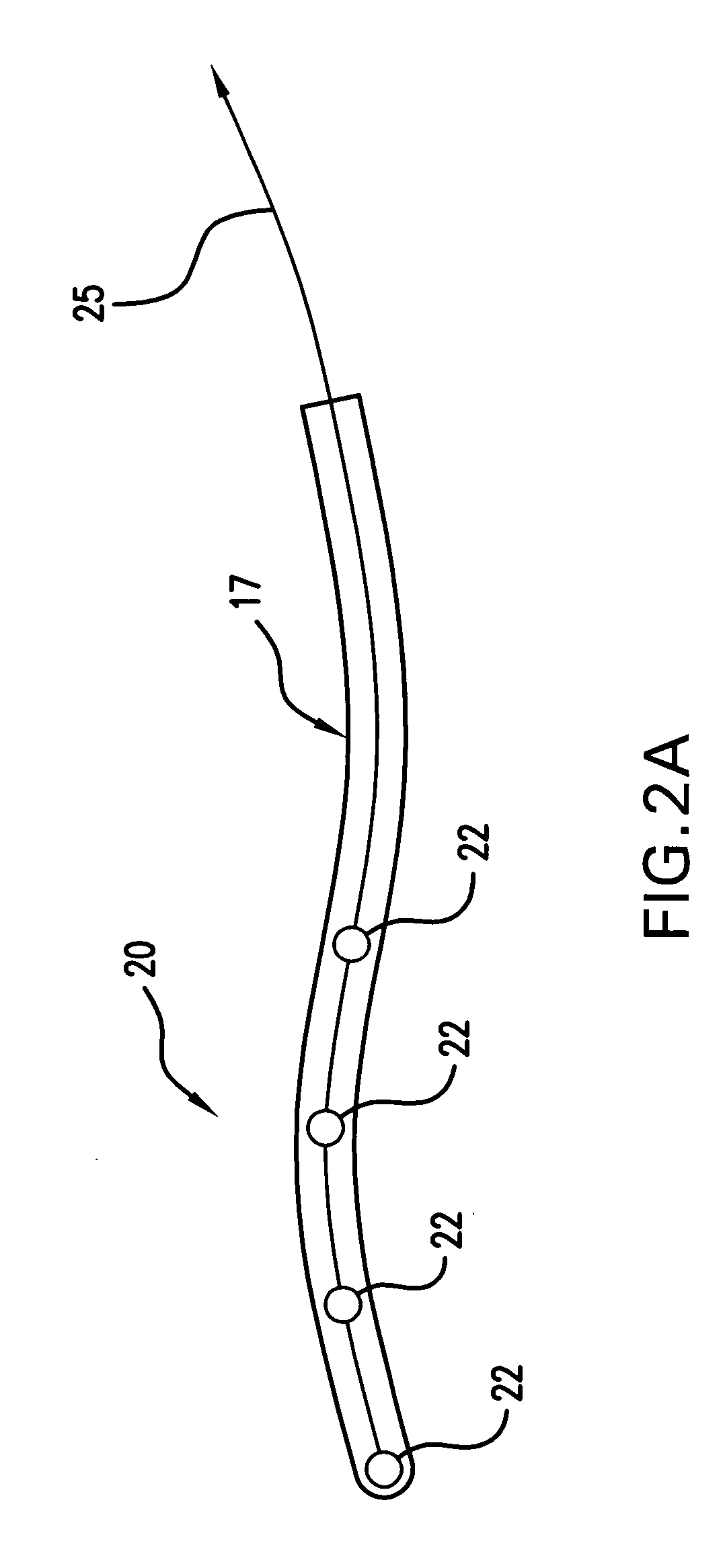Magnetic field sensor-based navigation system to track MR image-guided interventional procedures
a magnetic field sensor and navigation system technology, applied in the field of magnetic field sensor-based navigation system to track magnetic field sensor-based navigation system to determine the exact spatial position of the interventional device within three-dimensional spa
- Summary
- Abstract
- Description
- Claims
- Application Information
AI Technical Summary
Problems solved by technology
Method used
Image
Examples
example 1
[0055] The present example demonstrates the effective measurement of local magnetic fields within the MR scanner by means of Hall sensors using a very simple Hall sensor array as shown in FIG. 3. A commercially available Hall sensor device 22 (HW-105C, sensitivity 2V / T at 15 mA Hall current, AKE, Tokyo, Japan) with a single sensitivity direction was connected to four pairwise twisted copper wires 27 (PU insulated, 100 μm), as shown in FIG. 3. The dimensions of this Hall sensor are 1.5×1×0.5 mm3. In order to reduce the induction of RF energy in the copper wires 27, small ferrite cores 29 have been mounted every 4 cm along the wire.
[0056] The Hall voltage was amplified with an ac-coupled instrumental amplifier, followed by a 16-Bit ADC (PCI-6014, National Instruments). Hall voltage was measured at different spatial positions and orientations within the MR scanner imaging space during the run of constant, bipolar magnetic field gradient pairs, as well as during a balanced steady state...
example 2
[0059] In Example 2, the Hall sensor described in Example 1 is utilized to construct a magnetic sensor navigation system in accordance with the present invention. In this illustrative embodiment, the magnetic sensor array consists of a single Hall sensor (HW-105C, sensitivity 2V / T at 15 mA Hall current, AKE, Tokyo, Japan) with a single sensitivity direction. This Hall sensor, with a single sensitivity direction, is connected to four, pairwise twisted copper wires (PU insulated, 100 μm), which are themselves electrically connected via a larger wire or connector so as to be able to send electric signals to a sensor interface. The sensor interface operates to process electronic signals received from the Hall sensor, and then sends the processed signals to a processing and control unit that operates to calculate the position of the sensor from induced Hall voltages. In addition, an ac-coupled instrumental amplifier followed by a 16-Bit ADC (PCI-6014, National Instruments) are connected ...
embodiment
Method Embodiment
[0062] Having fully and completely described various apparatus embodiments in accordance with the present invention, an illustrative method embodiment for tracking and visualizing an interventional device in an MR environment will be outlined below. More particularly, an illustrative method in accordance with the present invention is a method of guiding an interventional device in a magnetic resonance environment, which includes the steps of: (a) providing a magnetic sensor navigation system in accordance with the present invention, such as a system comprising: (i) a magnetic sensor array, including one or more magnetic non-Faradaic sensors attached to an interventional device; (ii) a sensor interface operatively connected to receive a signal from each sensor of the array, wherein the sensor interface operates to generate a processed signal from one or more signals received from each sensor of the array; and (iii) a processing and control unit connected to receive t...
PUM
 Login to view more
Login to view more Abstract
Description
Claims
Application Information
 Login to view more
Login to view more - R&D Engineer
- R&D Manager
- IP Professional
- Industry Leading Data Capabilities
- Powerful AI technology
- Patent DNA Extraction
Browse by: Latest US Patents, China's latest patents, Technical Efficacy Thesaurus, Application Domain, Technology Topic.
© 2024 PatSnap. All rights reserved.Legal|Privacy policy|Modern Slavery Act Transparency Statement|Sitemap



